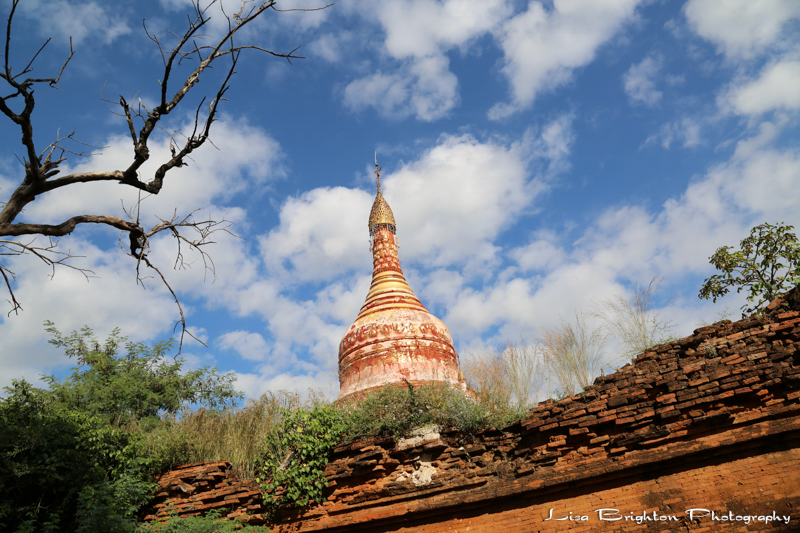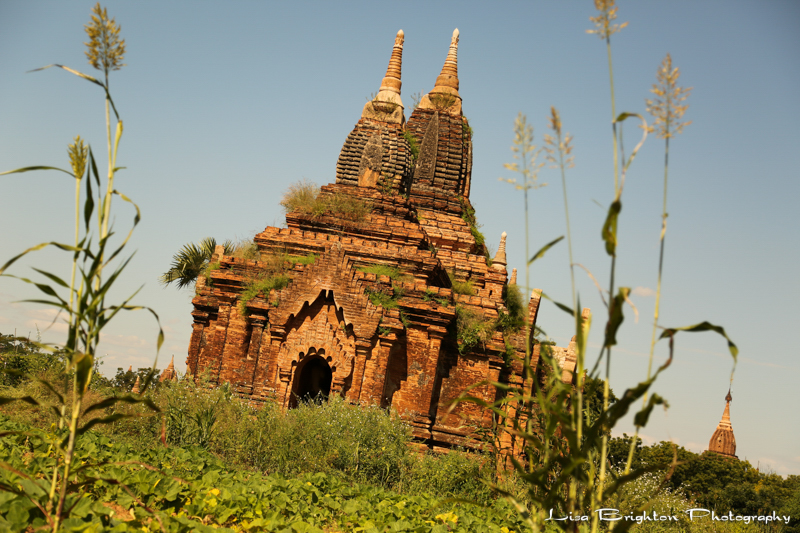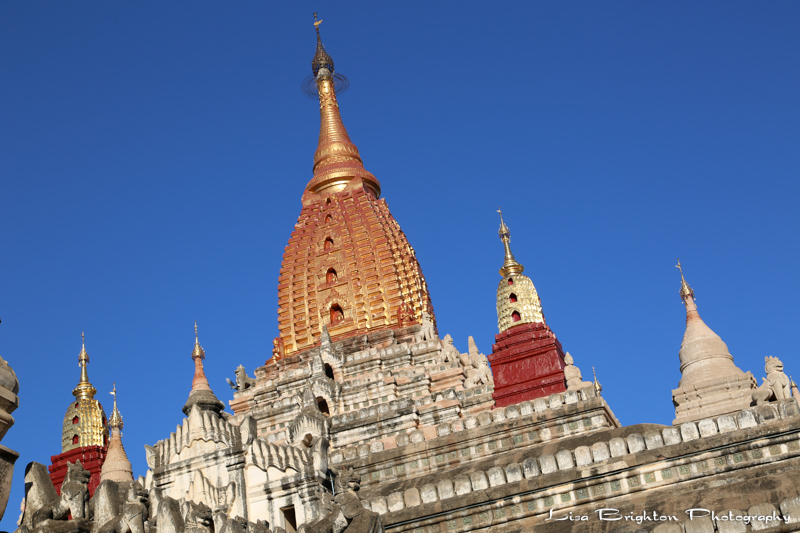16. Landscapes
 Another early morning… I reach over and turn off my alarm. It’s 4:15 and time to get up. I sit on the side of the bed, groggy and feeling like I didn’t sleep at all. Visions of everything that I’ve been photographing flashed through my mind for most of the night. I try to shake it off as I start my morning routine by lighting a candle and incense I bought in Cambodia. I get out my journal and spend some time writing. I shower, dress, eat an energy bar and then organize my camera gear. I know today is going to be very busy from the get-go, so I double check what I’ve packed, and then I’m out the door. I join the others in the lobby and feel the
Another early morning… I reach over and turn off my alarm. It’s 4:15 and time to get up. I sit on the side of the bed, groggy and feeling like I didn’t sleep at all. Visions of everything that I’ve been photographing flashed through my mind for most of the night. I try to shake it off as I start my morning routine by lighting a candle and incense I bought in Cambodia. I get out my journal and spend some time writing. I shower, dress, eat an energy bar and then organize my camera gear. I know today is going to be very busy from the get-go, so I double check what I’ve packed, and then I’m out the door. I join the others in the lobby and feel the  excitement in the air. Today is a special day here in Bagan. Our National Geographic Photography Expedition expert, Chris Rainier, calls out, “Andiamo,” which is his way of telling us it’s time to go. On some mornings we’ve been slow to leave, but there is no hesitation on this special day. Horse and buggies wait to take us to the Shwe San Daw Pagoda to photograph the sunrise. It’s one of the highlights of Bagan, and the short, peaceful trot there does not disappoint. The rural area is very quiet, and as we pass by large fields, I can see the dark outlines of some of the 2,200 temples and pagodas spread out around us. The landscape is unparalleled by any other in Myanmar, and I’m anxious to see what it’s going to look like from high above. I’ve already photographed numerous temples and pagodas and admired their unique architecture, sizes and ornamentations from nearly every possible angle. Climbing up one will be an exceptional way to complete the list. This part of Myanmar is a slice of photo-opportunistic heaven in terms of beauty and unique landscapes. I can only imagine what Bagan was like in its prime during the 9th through the 13th centuries and blanketed with more than 10,000 Buddhist temples, pagodas and monasteries. One of Myanmar’s most famous kings, King Anawrahta, was the founder of the Pagan Empire, which was based
excitement in the air. Today is a special day here in Bagan. Our National Geographic Photography Expedition expert, Chris Rainier, calls out, “Andiamo,” which is his way of telling us it’s time to go. On some mornings we’ve been slow to leave, but there is no hesitation on this special day. Horse and buggies wait to take us to the Shwe San Daw Pagoda to photograph the sunrise. It’s one of the highlights of Bagan, and the short, peaceful trot there does not disappoint. The rural area is very quiet, and as we pass by large fields, I can see the dark outlines of some of the 2,200 temples and pagodas spread out around us. The landscape is unparalleled by any other in Myanmar, and I’m anxious to see what it’s going to look like from high above. I’ve already photographed numerous temples and pagodas and admired their unique architecture, sizes and ornamentations from nearly every possible angle. Climbing up one will be an exceptional way to complete the list. This part of Myanmar is a slice of photo-opportunistic heaven in terms of beauty and unique landscapes. I can only imagine what Bagan was like in its prime during the 9th through the 13th centuries and blanketed with more than 10,000 Buddhist temples, pagodas and monasteries. One of Myanmar’s most famous kings, King Anawrahta, was the founder of the Pagan Empire, which was based  here because of its strategic location in the Irrawaddy Valley and near the Irrawaddy River. The Kingdom of Pagan was the first kingdom to unify the regions that would later constitute modern-day Myanmar. At its height, upwards of 200,000 people lived here. This morning there seems to be only 200. It’s so quiet, and there aren’t many signs of life between the hotel and our destination. When I arrive, I take off my shoes and start the climb. The steps are steep, but I use the handrail. I appreciate the support because my camera gear is heavy. There are five levels of terraces, but I pass the first four and aim for the top one. I hope it will give me the best view. A few of my fellow travelers are already there, and I see them setting up their tripods and getting into position before too many tourists arrive. I reach the top and carefully walk around to the east side. I look up at the cylindrical stupa and admire the bejeweled umbrella that will be even prettier once it’s basked in the sun’s rays. I get my camera out of my backpack, look to the east and quietly wait. I hear some of the others whispering to one another — something I’ve noticed a lot of people do while watching the sun rise or set. It makes me smile. I appreciate the anticipation I feel around me. The experience gets even better when the sun starts to peek through the small bank of clouds on the horizon. I watch as a golden light spreads across the landscape, and I take some images from where I am before walking around to the west side of the terrace. The warm morning light blankets dozens of pagodas in my frame and creates a nice panorama. I take some images and then stop shooting. I slowly walk around the circumference of the structure and just admire the view. Being up here is a once-in-a-lifetime experience, so I want to take in the moment and remember how special this morning is…
here because of its strategic location in the Irrawaddy Valley and near the Irrawaddy River. The Kingdom of Pagan was the first kingdom to unify the regions that would later constitute modern-day Myanmar. At its height, upwards of 200,000 people lived here. This morning there seems to be only 200. It’s so quiet, and there aren’t many signs of life between the hotel and our destination. When I arrive, I take off my shoes and start the climb. The steps are steep, but I use the handrail. I appreciate the support because my camera gear is heavy. There are five levels of terraces, but I pass the first four and aim for the top one. I hope it will give me the best view. A few of my fellow travelers are already there, and I see them setting up their tripods and getting into position before too many tourists arrive. I reach the top and carefully walk around to the east side. I look up at the cylindrical stupa and admire the bejeweled umbrella that will be even prettier once it’s basked in the sun’s rays. I get my camera out of my backpack, look to the east and quietly wait. I hear some of the others whispering to one another — something I’ve noticed a lot of people do while watching the sun rise or set. It makes me smile. I appreciate the anticipation I feel around me. The experience gets even better when the sun starts to peek through the small bank of clouds on the horizon. I watch as a golden light spreads across the landscape, and I take some images from where I am before walking around to the west side of the terrace. The warm morning light blankets dozens of pagodas in my frame and creates a nice panorama. I take some images and then stop shooting. I slowly walk around the circumference of the structure and just admire the view. Being up here is a once-in-a-lifetime experience, so I want to take in the moment and remember how special this morning is…
